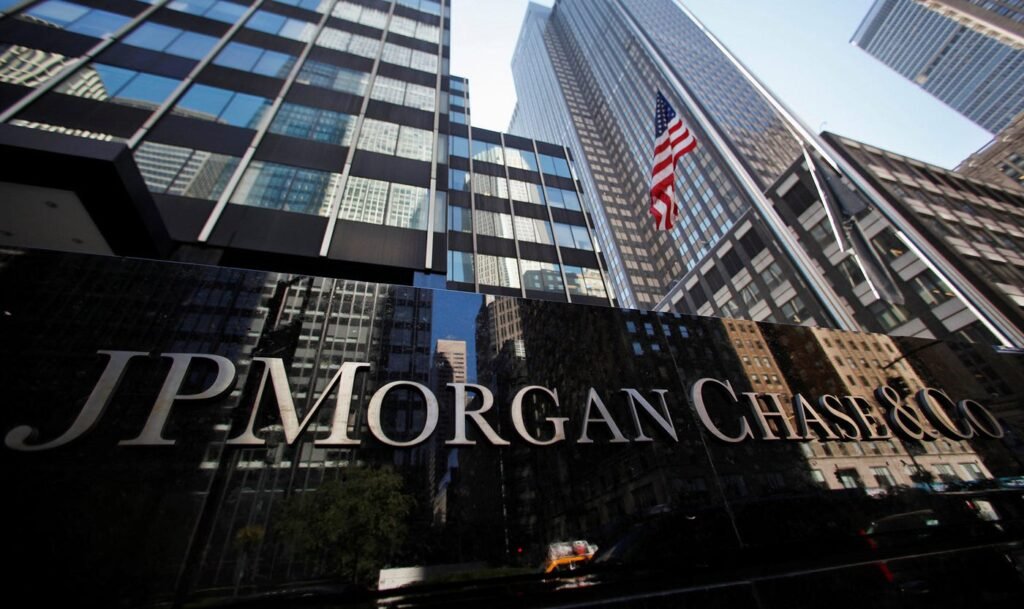JPMorgan Chase, one of the largest and most influential banks in the world, continues to strengthen its position in the global financial landscape. With its recent strategic investments and commitment to digital transformation, the banking giant is setting a strong course for the future. From expanding into new markets to investing heavily in technology and sustainable finance, JPMorgan Chase is building a foundation for long-term growth.
In this article, we’ll explore the history, strategies, global footprint, and future outlook of JPMorgan Chase. We’ll also look into how it’s responding to challenges and what it means for investors, customers, and the financial industry as a whole.
A Brief History of JPMorgan Chase
JPMorgan Chase traces its roots back over 200 years. It was formed through the merger of several large banks, most notably J.P. Morgan & Co. and Chase Manhattan Bank. Today, the company stands as a symbol of American banking strength and global financial influence.
Over the decades, it has played major roles in financing railroads, supporting U.S. war efforts, and shaping international economic policy. Now, with assets over $4 trillion, it ranks among the top banks globally.
How JPMorgan Chase Makes Its Money

JPMorgan Chase operates in multiple sectors of the financial world. Its core business areas include:
- Consumer and Community Banking – Checking accounts, credit cards, mortgages, and personal loans.
- Corporate and Investment Banking – Assisting large companies with financing, mergers, and acquisitions.
- Commercial Banking – Loans and financial services for midsize businesses.
- Asset and Wealth Management – Investment and retirement planning for individuals and institutions.
This diversified business model helps the bank remain resilient during economic downturns and take advantage of growth during economic upswings.
Recent Global Expansion Moves
In the past few years, JPMorgan Chase has made significant moves to expand globally. One notable example is its entrance into the U.K. retail banking market with the launch of Chase UK, a fully digital bank. Within a year, it gained over a million customers, offering competitive rates and modern banking features.
In Asia, the company is also investing heavily, particularly in China and India. It has acquired full ownership of its Chinese securities venture and is boosting its operations to cater to the growing middle class and booming startup ecosystem.
Other notable expansion efforts include:
- Opening new investment banking offices in Africa
- Expanding payment systems in Latin America
- Increasing commercial lending in Southeast Asia
These efforts reflect a clear strategy: to grow in emerging markets while continuing to dominate in mature markets.
Technology and Innovation at the Core
Digital transformation is a top priority for JPMorgan Chase. The bank is investing billions in technology to improve operations, enhance cybersecurity, and offer cutting-edge digital services.
Key Tech Initiatives:
- AI and Machine Learning: Used in fraud detection, customer service, and trading.
- Blockchain and Cryptocurrencies: JPMorgan’s blockchain platform, Onyx, supports cross-border payments and tokenized assets.
- Mobile Banking: Constant upgrades to the Chase mobile app to meet changing customer needs.
By staying ahead in fintech innovation, JPMorgan Chase aims to deliver smoother, safer, and more personalized financial services.
Focus on Sustainability and ESG
Environmental, Social, and Governance (ESG) goals are now a central part of JPMorgan Chase’s mission. The bank has pledged over $2.5 trillion in sustainable development financing by 2030. This includes funding for:
- Renewable energy projects
- Affordable housing
- Small business growth
- Diversity and inclusion programs
JPMorgan also aims to achieve net-zero emissions across its operations and financed activities by 2050. As investor and regulatory pressure for ESG transparency grows, the bank is actively adapting its strategies.
Challenges Facing JPMorgan Chase

Despite its massive size and global presence, JPMorgan Chase faces several challenges:
1. Economic Uncertainty
Interest rate hikes, inflation, and slowdowns in major economies impact consumer spending and borrowing.
2. Regulatory Pressures
Governments are increasing scrutiny of large financial institutions, particularly in areas like data privacy, fair lending, and anti-money laundering.
3. Cybersecurity Threats
As a digital banking leader, JPMorgan is a major target for cyberattacks and must constantly upgrade its defenses.
4. Competition from Fintech
New startups offering quick, digital-first solutions are luring customers away from traditional banks.
To counter these, JPMorgan is staying agile, investing in technology, and building stronger relationships with customers.
Leadership and Vision
Jamie Dimon, Chairman and CEO of JPMorgan Chase since 2005, is one of the most recognized leaders in global finance. Under his leadership, the bank survived the 2008 financial crisis, grew stronger, and became more tech-driven.
Dimon’s annual letters to shareholders often attract attention for their insights on the economy, innovation, and corporate responsibility. His leadership style balances risk management with bold growth strategies.
Financial Performance and Stock Market Presence
JPMorgan Chase is a consistent performer on Wall Street. It’s listed on the New York Stock Exchange (NYSE: JPM) and is part of the Dow Jones Industrial Average.
Key highlights from its recent earnings:
- Revenue growth driven by higher interest income.
- Record profits in wealth and asset management.
- Strong capital position and healthy dividend payouts.
Investors see JPMorgan as a reliable, long-term stock with both defensive qualities and growth potential.
The Future of JPMorgan Chase

Looking ahead, JPMorgan Chase is positioning itself to remain a dominant player in the financial world. Some of its future goals and plans include:
- Deeper digital transformation across all divisions.
- Expanded operations in fast-growing economies like Brazil, India, and Indonesia.
- Stronger presence in wealth management, especially for millennials and Gen Z.
- Innovation in blockchain-based financial products and digital asset custody.
Its ability to balance traditional banking values with modern technology gives it an edge over many competitors.
Why JPMorgan Chase Matters to You
Whether you’re a customer, investor, or just someone interested in the economy, JPMorgan Chase plays a role in your financial ecosystem. Here’s how:
- As a consumer, you benefit from improved digital banking and financial products.
- As an investor, you gain from a company with solid earnings and a long-term growth vision.
- As a citizen, you are affected by its policies on housing, sustainability, and job creation.
By understanding JPMorgan Chase’s strategies and impact, you can better navigate your own financial journey.
Final Thoughts
JPMorgan Chase’s evolution from a traditional bank to a global, tech-savvy financial powerhouse is a story of smart leadership, innovation, and strategic growth. With operations in over 100 countries and influence in nearly every financial sector, the bank’s next moves will likely shape the future of banking itself.
Read Next – Lyft Business Model: How the Ride-Share Giant Operates






